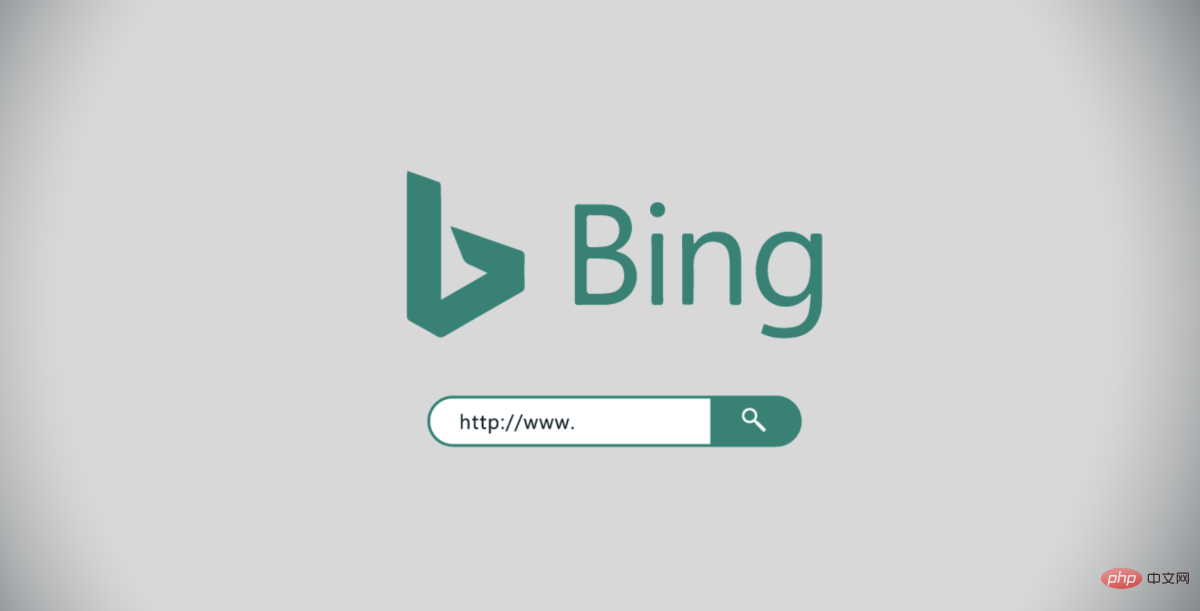 Technology peripherals
Technology peripherals AI
AI Read this article to understand the AutoGen open source framework for building multi-agent
Read this article to understand the AutoGen open source framework for building multi-agentHello folks, I am Luga, today we will talk about technologies related to the artificial intelligence (AI) ecological field - AutoGen - a unified multi-agent dialogue framework.
Imagine a scenario like this:
We no longer fight alone, but have a highly personalized, cross-domain integrated artificial intelligence team. Each team member is skilled and professional in their own field, cooperates seamlessly with each other, communicates efficiently, and never gets tired. They are able to work highly collaboratively to address complex and ever-changing challenges. This is the essence of AutoGen - a groundbreaking multi-agent dialogue framework.
AutoGen+ gives us unlimited possibilities, allowing us to form an exclusive strategic artificial intelligence team as we wish. Each member has a unique personality and expertise, forming a powerful synergy. There is no need for complicated authorizations and commands between them. They can spontaneously collaborate and complete any difficult tasks by simply interacting in natural language.


AutoGen’s agent ecosystem is a masterpiece of intelligent collaboration that perfectly blends artificial intelligence and human intelligence. In this system, diversified agents communicate through dialogue. No matter what complex dilemma they face, they can quickly form a tailor-made intelligent team to work together and brainstorm. Through the participation of StrategyAgent, weighing various options, and CodeAgent writing code implementation, all agents work together through seamless dialogue to make difficult tasks close at hand.
Based on seamless dialogue mechanism. Agents can communicate directly, share knowledge and inspire each other. They are able to work collaboratively to solve complex problems, making difficult tasks more feasible. This intelligent collaboration method brings us unprecedented convenience and efficiency, allowing us to respond to challenges more quickly and achieve success.

Building MiniWobChat reference workflow based on AutoGen
3. What are the advantages of AutoGen?
As a transformative framework, AutoGen It enables developers to build next-generation LLM applications with enhanced functionality and human-computer interaction, simplifying multi-agent dialogue development, promoting human participation and enabling modular agent architecture, making it a valuable tool for exploring the full potential of artificial intelligence. Its specific advantages are mainly reflected in the following aspects:

Reference diagram for comparing the results of different agent design models
1. Modular design
AutoGen uses a modular agent architecture that enables developers to create custom agents with specific functionality and capabilities. This flexibility enables us to build diverse language model (LLM) applications suitable for a variety of needs and domains. Developers can design agents specialized for tasks such as information retrieval, natural language generation, or task execution, and combine them together to create complex multi-agent systems.
The advantage of modular design is to promote code reuse and simplify the agent development process. Developers can focus on building specific agent functionality rather than re-developing common components from scratch. This modular architecture also enables easy integration with third-party tools and services to extend the functionality of LLM applications.
Additionally, AutoGen’s modular agent architecture provides developers with greater flexibility and efficiency. By encapsulating specific functionality into independent agent modules, developers can develop and test at a smaller granularity while maintaining the composability and scalability of the overall system. This modular approach also makes maintenance and updates of the agent easier, as modifications can be made to a module individually without affecting the entire system.
2. Simplify multi-agent dialogue development
AutoGen revolutionizes the way multi-agent dialogue is developed by providing a high-level abstraction layer so that developers are no longer burdened by the complexity of the underlying LLM technology. It uses an intuitive conversation-based programming paradigm that enables developers to use natural language structures to define conversation flows and interactions between agents, greatly reducing the need for complex coding and LLM expertise.
At the same time, this simplification enables a wider range of developers, even those without deep LLM knowledge, to create complex multi-agent applications. AutoGen handles the orchestration and coordination of multiple LLMs, ensuring seamless collaboration and data exchange between agents, while developers can focus on defining conversation logic and agent behavior.
In addition, AutoGen's high-level abstraction layer provides developers with great convenience and flexibility. It abstracts complex technical details, allowing developers to focus more on the design and business logic of the conversation without having to delve into and deal with the underlying LLM technical details. This abstract method makes the development process more intuitive and efficient, and reduces development complexity.
3. Integration with LLM
AutoGen’s multi-agent approach can combine different LLM strengths to improve overall performance and accuracy. By leveraging multiple LLMs with complementary capabilities, AutoGen is able to address a wider range of tasks and provide more comprehensive solutions.
For example, one LLM can be dedicated to factual knowledge retrieval, while another LLM can focus on creative text generation. By combining these agents, AutoGen is able to provide more complete solutions for tasks that require factual information and creative output.
In addition, AutoGen’s support for various conversation modes makes it possible to create complex LLM applications to meet different needs. Developers can design sequential conversations to handle step-by-step tasks, use parallel conversations to handle multiple requests simultaneously, or use hierarchical conversations to manage complex decision-making processes.
Through this multi-agent approach, AutoGen is able to integrate different LLMs and leverage their respective strengths to provide a more powerful and flexible solution. This integrated approach not only improves the performance and accuracy of the system, but also broadens the scope of applications, making AutoGen a powerful tool capable of handling a variety of complex conversational tasks and needs.
4. Efficient delivery
AutoGen provides visualization and debugging tools that facilitate rapid prototyping and efficient iteration. Developers can leverage these tools to visualize the flow of conversations, identify potential bottlenecks or errors, and track the execution of agent interactions.
These tools provide developers with valuable insights into how their prototypes behave, identify issues, and make targeted improvements. With the ability to visualize and debug conversations, developers are able to prototype more quickly and ensure that the final application is well-structured and error-free.
At the same time, based on the diverse tool attributes provided by AutoGen, developers can intuitively view the execution process of the dialogue, understand the interaction between agents, and discover potential problems or optimization opportunities. Developers can optimize the conversation flow by viewing a visual representation of the conversation, tracing the agent's execution path, and identifying potential errors or bottlenecks.
Through visualization and debugging tools, developers are able to iterate and improve more efficiently, speeding up the development process and improving the quality of their applications. These tools provide a bridge between developers and prototypes, allowing them to gain a deeper understanding of how conversations are running and make adjustments and optimizations in a timely manner.
5. Real-time feedback improvements
In addition to the above-mentioned core feature advantages, AutoGen also provides comprehensive support for human-computer interaction, allowing developers to obtain real-time feedback during the prototyping process. Users can participate in prototype conversations and provide feedback on the naturalness of interactions, accuracy of responses, and overall user experience.
With users participating in prototype conversations, developers are able to observe and analyze user interactions, identify areas for improvement, and improve the prototype accordingly. This iterative feedback loop greatly speeds up the prototyping process and ensures that the final application is both usable and efficient.
In addition, developers can learn about user needs, preferences, and behavior patterns by observing users' actual interactions with prototypes. They can collect quantitative and qualitative data about interactions, such as user response times, frequency of use, satisfaction, etc., to evaluate prototype performance and user experience. This feedback helps developers identify potential issues and improvement opportunities, and make adjustments and optimizations based on user needs.
Through interaction with real users, developers can better understand user expectations and feedback, thereby providing applications that better meet user expectations. This user-centered design approach helps create user-friendly interfaces and interactions, improving application usability and user satisfaction.
Reference:
- [1] https://openreview.net/pdf?id=uAjxFFing2
- [2] https://microsoft.github. io/autogen/
The above is the detailed content of Read this article to understand the AutoGen open source framework for building multi-agent. For more information, please follow other related articles on the PHP Chinese website!
 2023年机器学习的十大概念和技术Apr 04, 2023 pm 12:30 PM
2023年机器学习的十大概念和技术Apr 04, 2023 pm 12:30 PM机器学习是一个不断发展的学科,一直在创造新的想法和技术。本文罗列了2023年机器学习的十大概念和技术。 本文罗列了2023年机器学习的十大概念和技术。2023年机器学习的十大概念和技术是一个教计算机从数据中学习的过程,无需明确的编程。机器学习是一个不断发展的学科,一直在创造新的想法和技术。为了保持领先,数据科学家应该关注其中一些网站,以跟上最新的发展。这将有助于了解机器学习中的技术如何在实践中使用,并为自己的业务或工作领域中的可能应用提供想法。2023年机器学习的十大概念和技术:1. 深度神经网
 人工智能自动获取知识和技能,实现自我完善的过程是什么Aug 24, 2022 am 11:57 AM
人工智能自动获取知识和技能,实现自我完善的过程是什么Aug 24, 2022 am 11:57 AM实现自我完善的过程是“机器学习”。机器学习是人工智能核心,是使计算机具有智能的根本途径;它使计算机能模拟人的学习行为,自动地通过学习来获取知识和技能,不断改善性能,实现自我完善。机器学习主要研究三方面问题:1、学习机理,人类获取知识、技能和抽象概念的天赋能力;2、学习方法,对生物学习机理进行简化的基础上,用计算的方法进行再现;3、学习系统,能够在一定程度上实现机器学习的系统。
 超参数优化比较之网格搜索、随机搜索和贝叶斯优化Apr 04, 2023 pm 12:05 PM
超参数优化比较之网格搜索、随机搜索和贝叶斯优化Apr 04, 2023 pm 12:05 PM本文将详细介绍用来提高机器学习效果的最常见的超参数优化方法。 译者 | 朱先忠审校 | 孙淑娟简介通常,在尝试改进机器学习模型时,人们首先想到的解决方案是添加更多的训练数据。额外的数据通常是有帮助(在某些情况下除外)的,但生成高质量的数据可能非常昂贵。通过使用现有数据获得最佳模型性能,超参数优化可以节省我们的时间和资源。顾名思义,超参数优化是为机器学习模型确定最佳超参数组合以满足优化函数(即,给定研究中的数据集,最大化模型的性能)的过程。换句话说,每个模型都会提供多个有关选项的调整“按钮
 得益于OpenAI技术,微软必应的搜索流量超过谷歌Mar 31, 2023 pm 10:38 PM
得益于OpenAI技术,微软必应的搜索流量超过谷歌Mar 31, 2023 pm 10:38 PM截至3月20日的数据显示,自微软2月7日推出其人工智能版本以来,必应搜索引擎的页面访问量增加了15.8%,而Alphabet旗下的谷歌搜索引擎则下降了近1%。 3月23日消息,外媒报道称,分析公司Similarweb的数据显示,在整合了OpenAI的技术后,微软旗下的必应在页面访问量方面实现了更多的增长。截至3月20日的数据显示,自微软2月7日推出其人工智能版本以来,必应搜索引擎的页面访问量增加了15.8%,而Alphabet旗下的谷歌搜索引擎则下降了近1%。这些数据是微软在与谷歌争夺生
 荣耀的人工智能助手叫什么名字Sep 06, 2022 pm 03:31 PM
荣耀的人工智能助手叫什么名字Sep 06, 2022 pm 03:31 PM荣耀的人工智能助手叫“YOYO”,也即悠悠;YOYO除了能够实现语音操控等基本功能之外,还拥有智慧视觉、智慧识屏、情景智能、智慧搜索等功能,可以在系统设置页面中的智慧助手里进行相关的设置。
 人工智能在教育领域的应用主要有哪些Dec 14, 2020 pm 05:08 PM
人工智能在教育领域的应用主要有哪些Dec 14, 2020 pm 05:08 PM人工智能在教育领域的应用主要有个性化学习、虚拟导师、教育机器人和场景式教育。人工智能在教育领域的应用目前还处于早期探索阶段,但是潜力却是巨大的。
 30行Python代码就可以调用ChatGPT API总结论文的主要内容Apr 04, 2023 pm 12:05 PM
30行Python代码就可以调用ChatGPT API总结论文的主要内容Apr 04, 2023 pm 12:05 PM阅读论文可以说是我们的日常工作之一,论文的数量太多,我们如何快速阅读归纳呢?自从ChatGPT出现以后,有很多阅读论文的服务可以使用。其实使用ChatGPT API非常简单,我们只用30行python代码就可以在本地搭建一个自己的应用。 阅读论文可以说是我们的日常工作之一,论文的数量太多,我们如何快速阅读归纳呢?自从ChatGPT出现以后,有很多阅读论文的服务可以使用。其实使用ChatGPT API非常简单,我们只用30行python代码就可以在本地搭建一个自己的应用。使用 Python 和 C
 人工智能在生活中的应用有哪些Jul 20, 2022 pm 04:47 PM
人工智能在生活中的应用有哪些Jul 20, 2022 pm 04:47 PM人工智能在生活中的应用有:1、虚拟个人助理,使用者可通过声控、文字输入的方式,来完成一些日常生活的小事;2、语音评测,利用云计算技术,将自动口语评测服务放在云端,并开放API接口供客户远程使用;3、无人汽车,主要依靠车内的以计算机系统为主的智能驾驶仪来实现无人驾驶的目标;4、天气预测,通过手机GPRS系统,定位到用户所处的位置,在利用算法,对覆盖全国的雷达图进行数据分析并预测。


Hot AI Tools

Undresser.AI Undress
AI-powered app for creating realistic nude photos

AI Clothes Remover
Online AI tool for removing clothes from photos.

Undress AI Tool
Undress images for free

Clothoff.io
AI clothes remover

AI Hentai Generator
Generate AI Hentai for free.

Hot Article

Hot Tools

mPDF
mPDF is a PHP library that can generate PDF files from UTF-8 encoded HTML. The original author, Ian Back, wrote mPDF to output PDF files "on the fly" from his website and handle different languages. It is slower than original scripts like HTML2FPDF and produces larger files when using Unicode fonts, but supports CSS styles etc. and has a lot of enhancements. Supports almost all languages, including RTL (Arabic and Hebrew) and CJK (Chinese, Japanese and Korean). Supports nested block-level elements (such as P, DIV),

Notepad++7.3.1
Easy-to-use and free code editor

MinGW - Minimalist GNU for Windows
This project is in the process of being migrated to osdn.net/projects/mingw, you can continue to follow us there. MinGW: A native Windows port of the GNU Compiler Collection (GCC), freely distributable import libraries and header files for building native Windows applications; includes extensions to the MSVC runtime to support C99 functionality. All MinGW software can run on 64-bit Windows platforms.

Atom editor mac version download
The most popular open source editor

SublimeText3 Linux new version
SublimeText3 Linux latest version






